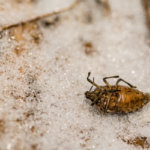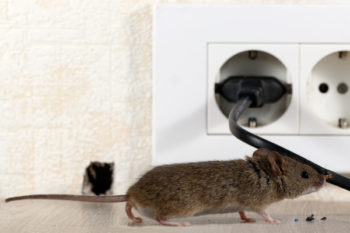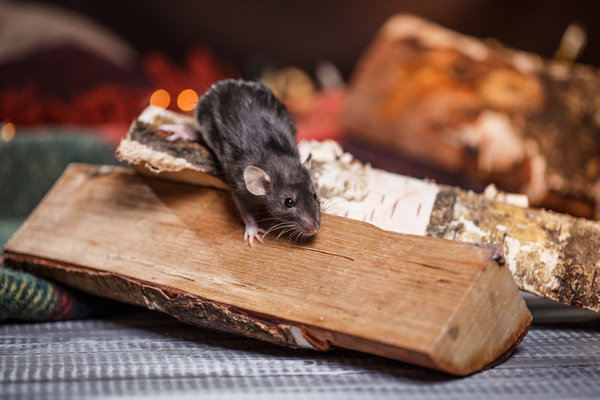
Hearing scratching or rustling in your walls? Wondering why mice are suddenly so active? Believe it or not, there are times when mice become more active. Like many animals, mice have daily and seasonal trends. We’ll answer the question “When are mice most active?” and tell you what you can do about it.
Mice grow more desperate as temperatures drop. Come fall and winter, your home looks pretty inviting to a shivering mouse. Make sure your home is mouse-proof and that you know who to call if mice do get in.
Are Mice Active During the Day?
No. Mice are nocturnal creatures that prefer the cover of night for a variety of reasons. Mouse eyes are sensitive to bright lights, and they navigate using smell or touch more than sight. They’ve also learned that foraging is safer when predators aren’t active – i.e., while you’re in bed.
To know if mice are running rampant during the wee hours, look for these signs of mice in your home:
- Chewed food packages or containers.
- Mouse droppings.
- Grease trails along baseboards.
- Footprints
- Squeaking and scratching sounds.
Mice maintain a small territory and usually nest 10-30 feet away from their food supply. Keep close watch around your kitchen and pantry and look for signs of nests.
Can Mice Survive Freezing Temperatures?
Mice and rats don’t hibernate. To survive winter, they have to find a warm place to live. In the wild, mice build burrows beneath the snow. They create a network of tunnels to travel through but maintain a low level of activity.
If mice can find a better option, say a nice warm home with plenty of food, they’ll likely take it. By November, mice are feeling an understandable pressure to get a move on. If they’re not already in your home, then they’re trying to get in. Late in the season, mice may become bolder and stay out longer in a last-ditch attempt to find shelter.
Unfortunately, mice also reproduce and rear offspring in their nests all year round. That mouse that snuck in can easily become a family of mice. They also continue feeding and teething all year, damaging your food and home in the process.
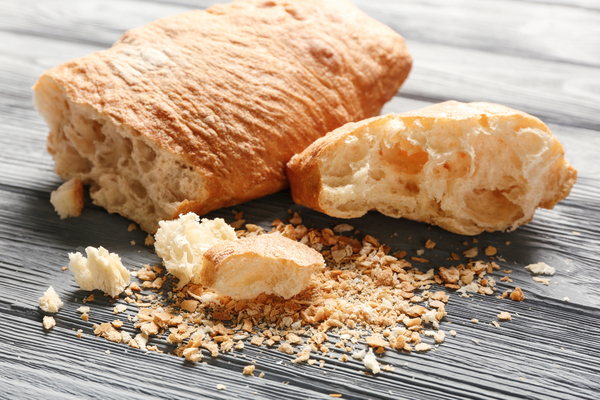
How Mice Survive the Winter
A mouse’s top priority in November is simply to keep warm. The minute they sense temperatures dropping, they’ll start actively seeking out sources of warmth. That being said, Mice can’t survive winter just by keeping warm; they also need to keep eating, drinking, and growing.
Unsurprisingly, mice are not picky eaters. They’ll chow down on just about anything, and they don’t need much. Mice have incredibly keen noses. They can smell dry goods through packaging and walls. You can assume mice know pretty much exactly where food is at all times. They can subsist on crumbs, garbage, or unsecured dry goods very easily. Finally, mice need a tiny amount of moisture and a place to hide. If your home provides these things, it’s the perfect winter destination.
How mice get into your home
Mice not only smell food through walls, but they can also follow the scent it produces. Often, mice will catch a tantalizing whiff of something and follow it to a tiny opening. They only need a hole the size of a dime to squeeze their way into your home. In some cases, they can even make an opening if there is soft material to gnaw.
Mice don’t just smell their way in, either. They’re also extremely attuned to changes in air pressure and temperature. As they make their way around a home, they can actually feel tiny drafts created by holes. They can follow that sense of warmth all the way through a hole and into your home. Mice are also surprisingly proficient climbers. Given an opportunity, they’ll crawl up to any opening they can get–even if that opening’s on your roof!
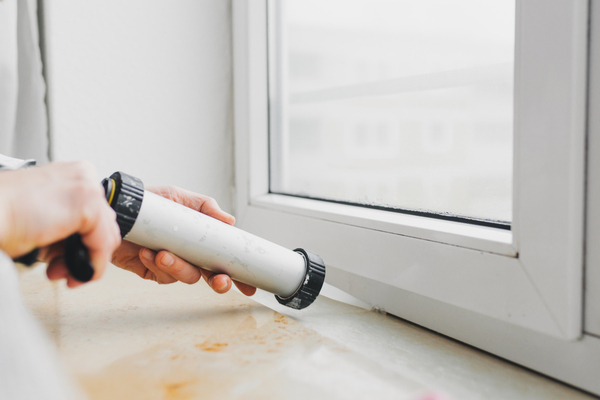
How to prevent mice infestations in Your Home
Mice get into homes by following small drafts back to their sources. Preventing them means finding these sources before they can. Start in your basement and look for any cracks, gaps, or holes in and around your walls. Pay special attention to window and door frames, areas around utility lines, and baseboards. Patch up holes with caulk or steel wool, which will help deter rats and mice. Remember: any hole that’s big enough to notice is probably big enough for mice to use.
Keep mice from getting to food by storing all pantry foods in airtight, hard plastic containers. Consider keeping these containers in elevated shelves, rather than near the floor. Keep your food preparation and dining areas clean, especially during the winter. Vacuum and/or mop regularly, clean surfaces after every meal, and don’t let crumbs accumulate. Make sure you don’t let garbage pile up, either.
Mice Control for Michigan, Indiana and Ohio
The bad news: there’s never really an “off-season” when it comes to mouse infestations. But we have good news, too. No matter how relentless or desperate the mouse, we can keep them out of your home for good.
If you do end up with mice activity in your home, give Griffin a call. Mice never take a season off, so neither do we. We’re always happy to help you leave pests out in the cold.


